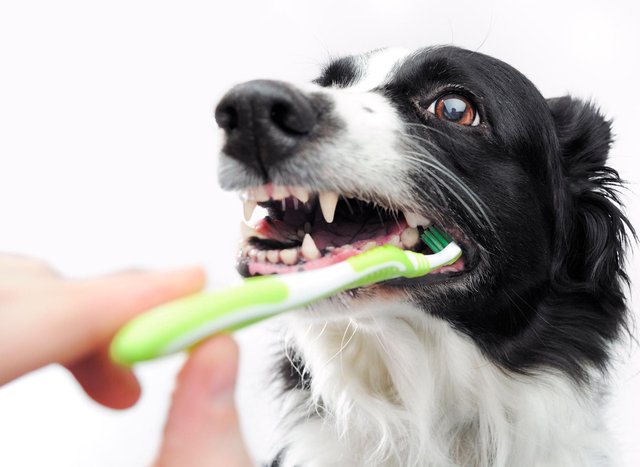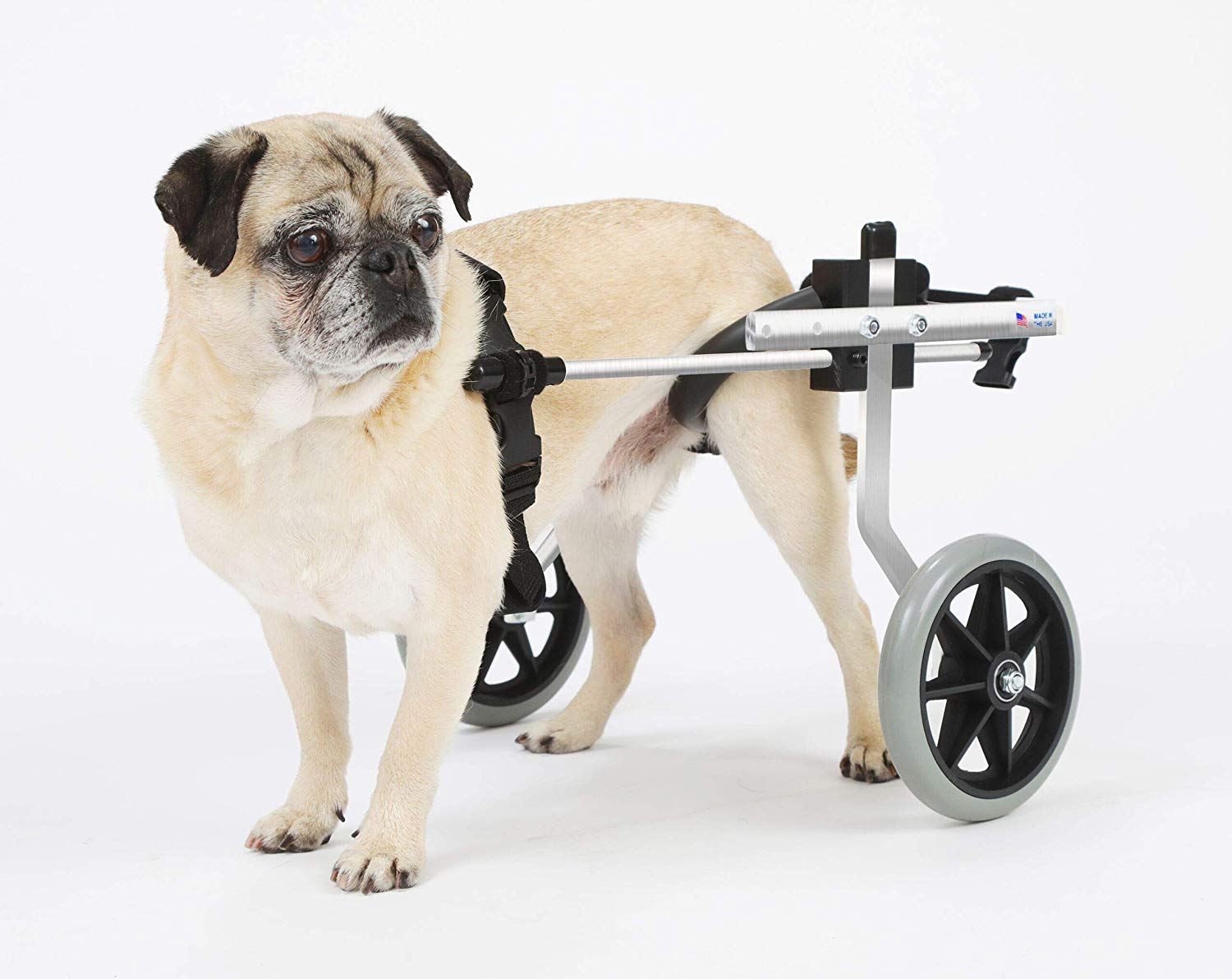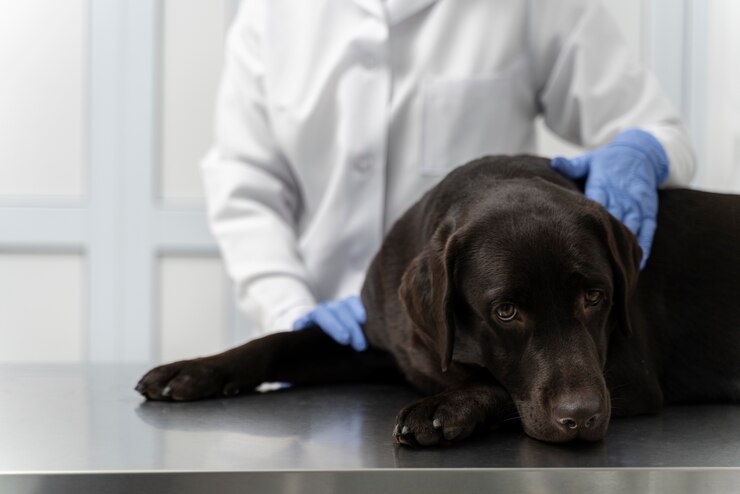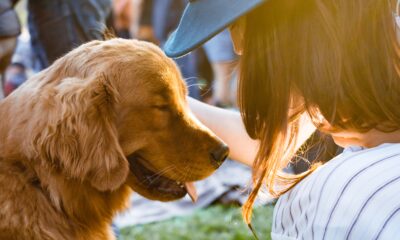Dog
Top 10 Keys for mouth cleaning in dogs?

Top facts for mouth cleaning in dogs
Here are top keys for mouth cleaning in dogs. When we go to the vet with our dog, it is normal for dog general examination to be carried out to make sure that everything is in order. In this checkup, the vet will look at the animal’s nose, eyes, mouth, and even examine its joints and measure its body temperature.
It is in this review where the expert will assess the state of the dog’s mouth and recommend cleaning it or waiting after analyzing the teeth and gums.
Unlike people, dogs do not brush their teeth 3 times a day , so when we go to the vet, it is good to remind them to assess our pet’s mouth and tell us if it is necessary to do a mouth cleaning or otherwise . , when should we do it to maintain its hygiene.
Bacteria in the mouth of dogs are very common and will stick to the tooth (bacterial plaque) without us being able to see them. Later, the mixture of this plaque with saliva will give rise to tartar . The latter, more easily visible, is brownish-green in color and will appear on the dog’s teeth , fangs, molars, incisors, etc. Causing damage to the pieces themselves and sometimes pain and inflammation in the gums.
It is important to be clear that it is not necessary to wait for our dog to have tartar to clean his mouth. Moreover, the ideal is to have constant hygiene habits at home and carry out a thorough cleaning annually to avoid:
- Halitosis : bad breath due to the accumulation of bacteria and tartar.
- Inflammation of the gums: this will cause pain when eating and chewing, and can sometimes cause the animal to even stop eating . In these cases, the dog’s symptoms are anorexia , fever if the infection is severe, and listlessness .
- Cardiovascular problems: When bacteria enter the bloodstream, they can reach the heart and cause endocarditis , causing subsequent problems.
- Infraorbital abscesses : if the dog has a lot of infection in the mouth, these bacteria can make abscesses in the root of the tooth, and that infection will try somewhere causing abscesses , which will suppurate purulent content and cause pain and discomfort to the animal.
This problem will not improve until the part causing it is removed. It is very common in small breeds such as the Yorkshire or poodle , which tend to have more periodontal diseases than the rest.
When should a mouth cleaning in dogs be done?
When we go to the vet because our dog has an abscess in a tooth or because he is not eating and his gums are red and inflamed, it is easy to make the decision to clean his mouth. But when the mouth “is not so bad”, sometimes we prefer to wait, something highly inadvisable since this has consequences:
- Losing teeth.
- The dog stops eating.
- You have pain and discomfort.
- You may have heart problems.
It is not necessary with the advances that there are today to wait for these situations and put our best friend at risk.
What does mouth cleaning in dogs consist of?
Mouth cleanings are performed under general anesthesia for two reasons:
- The first and most important , so that, through general anesthesia, we can have the dog intubated and thus when it comes to removing tartar and bacteria, the trachea will be more protected against these residues, thus avoiding aspiration pneumonia, among other complications. .
- Dogs are not still and you cannot tell them not to move, that is why it is safer to put them to sleep to perform this procedure, and once it is finished, wake them up without any problem.
Once it is anesthetized, an ultrasound equipment proceeds to remove the tartar and any other type of residue, always protecting the tooth very well. The external and internal faces of all the teeth are cleaned.
Then a dental polishing is performed, to remove the bacterial plaque from the tooth (which was formed before the tartar and cannot be seen).
Following this, the dog is awakened from general anesthesia and kept in the veterinary facility until he is awake and active, just as he was admitted.
Depending on whether there are extractions of parts that must be removed or if it is not necessary, the veterinarian will establish a treatment with antibiotics and anti-inflammatory.
Once the mouth is clean, you can start treating it with toothpastes or other maintenance products to prevent tartar from reappearing.
If you have any doubts about this, remember that MAPFRE has insurance for pets.
Dog
Wheelchairs for Dogs Enhancing Mobility and Quality of Life

For many pet owners, dogs are more than just animals they’re cherished companions who bring immense joy and companionship. Unfortunately, some dogs experience mobility challenges due to injuries, illnesses, or congenital conditions that affect their ability to walk or run. Fortunately, technological advancements and innovative solutions have paved the way for the creation of specialized wheelchairs designed specifically for dogs. These devices play a crucial role in improving the mobility and overall quality of life for these beloved pets.
Understanding the Need for Dog Wheelchairs
Dogs can encounter mobility issues due to various reasons, including spinal injuries, degenerative diseases, neurological disorders, and limb amputations. Such conditions can severely limit a dog’s movement and impact their independence. Wheelchairs for dogs provide essential support by assisting in weight-bearing, enabling them to move freely, exercise, and engage in regular activities without excessive strain or discomfort.
Design and Functionality of Dog Wheelchairs
Dog wheelchairs are custom-built devices tailored to fit the unique anatomy and size of different dog breed. These wheelchairs typically consist of a frame, wheels, straps or harnesses, and padding for comfort. The design varies based on the dog’s needs rear support for hind limb weakness, front support for forelimb disabilities, or full-body support for dogs with more complex conditions.
Most wheelchairs are adjustable, allowing for modifications as the dog’s condition progresses or changes. They’re lightweight and crafted from durable materials to ensure ease of movement and durability. Some models even come with accessories such as all-terrain wheels for outdoor adventures or additional support for stability.
Benefits of Using Wheelchairs for Dogs
The advantages of dog wheelchairs are manifold. Primarily, these devices restore mobility and independence, enabling dogs to move around freely, exercise, and participate in activities they previously enjoyed. Enhanced mobility helps prevent muscle atrophy, maintains joint flexibility, and contributes to better overall health.
Additionally, wheelchairs can improve a dog’s mental well-being by reducing frustration and anxiety associated with limited movement. It fosters a sense of normalcy and allows them to remain an active part of their family’s life. Moreover, dog wheelchairs can alleviate the burden on pet owners, making it easier to care for their disabled pets and reducing the risk of caretaker burnout.
Adoption and Adaptation to Dog Wheelchairs
Introducing a dog to a wheelchair requires patience and positive reinforcement. Initially, some dogs may be hesitant or uncomfortable with the device. Training and gradual introduction play a crucial role in helping them adapt. Encouraging them with treats, short sessions, and gentle guidance can help dogs become accustomed to the wheelchair.
It’s essential to monitor the dog’s comfort and make necessary adjustments to ensure the wheelchair fits properly without causing any discomfort or chafing. Regular checks and proper maintenance are vital to ensure the wheelchair remains functional and comfortable for the dog.
Impact on the Pet-Owner Relationship
The use of wheelchairs can deepen the bond between pets and their owners. Owners often witness their dog’s determination and resilience, strengthening their emotional connection. Furthermore, the satisfaction derived from witnessing their pet’s improved quality of life reinforces the sense of companionship and care.
Conclusion
Wheelchairs for dogs are invaluable tools that significantly improve the lives of disabled or mobility-impaired pets. These devices not only restore freedom of movement but also contribute to the overall well-being and happiness of the dog. The advancements in veterinary medicine and technology continue to drive innovation in creating more tailored and effective solutions, providing hope and support for dogs and their loving owners.
Through these wheelchairs, dogs can continue to enjoy a fulfilling life, filled with love, play, and companionship, reaffirming the timeless bond between humans and their furry companions.
Dog
Understanding Dog Constipation

Dogs are cherished friends that are renowned for their lively nature and unwavering devotion. But just like people, dogs can have health problems, and constipation is a typical ailment that they face. It’s critical for responsible pet owners to be aware of the warning symptoms, comprehend the underlying causes, and understand how to treat and avoid constipation in dogs.
What Is Constipation in Dogs?
Constipation in dogs is the inability to easily pass stool due to irregular or difficult bowel motions. Dogs typically urinate once or more times a day, according to their age, diet, and general health. Constipation in dogs results in firm, dry stools that are difficult to pass, which can be uncomfortable and possibly lead to health issues.
Dog constipation causes:
Dog constipation can be caused by a number of things, such as:
- Dietary Problems: Constipation may result from abrupt dietary changes or inadequate fiber consumption. Low-fiber diets might cause firmer, more difficult-to-pass stools.
- Dehydration: Drinking too little water can make the body absorb additional moisture from the feces, which makes it harder to pass and dry.
- Absence of Exercise: Getting regular exercise encourages bowel movements. Dogs that lead sedentary lives may be more prone to constipation.
- Obstructions: Eating non-digestible materials such as hair, bones, or foreign objects can clog the digestive track and cause constipation.
- Underlying Medical Conditions: Disorders such enlarged prostates, anal gland disorders, neurological diseases, or digestive system cancers can cause
Symptoms of Dog Constipation:
Identifying constipation symptoms in dogs is crucial for early intervention. Look out for the following signs:
- Straining: Continuous attempts to defecate with little or no results is a telltale sign of constipation.
- Dry, Hard Stool: Stools that are dry, hard, and smaller than usual indicate constipation.
- Abdominal Discomfort: Your dog may show signs of discomfort, such as restlessness, whining, or a hunched posture due to abdominal pain.
- Loss of Appetite: Constipated dogs might lose their appetite or show a decreased interest in food.
- Vomiting: In severe cases, constipation can lead to vomiting, as the gastrointestinal tract becomes impacted.
Treating Dog Constipation:
If you suspect your dog is constipated, it’s essential to consult a veterinarian for proper diagnosis and treatment. However, some measures can help alleviate constipation:
- Dietary Changes: Adding fiber-rich foods like pumpkin, sweet potatoes, or bran to your dog’s diet can soften stools and facilitate bowel movements.
- Hydration: Ensure your dog has access to fresh water at all times. Increased water intake helps soften stools and promotes bowel movements.
- Exercise: Regular exercise aids digestion and encourages bowel movements. Take your dog for walks or engage in active play sessions.
- Medication: Your vet may prescribe stool softeners or laxatives to help your dog pass stools more comfortably.
- Enemas or Manual Extraction: In severe cases, a veterinarian may need to perform an enema or manually extract the impacted stool under sedation.
Preventing Dog Constipation:
Prevention is key in managing constipation in dogs:
- Balanced Diet: Feed your dog a well-balanced diet with adequate fiber content to promote healthy digestion.
- Hydration: Ensure your dog drinks enough water to maintain proper hydration levels.
- Regular Exercise: Incorporate regular physical activity into your dog’s routine to support gastrointestinal health.
- Monitor Health: Regular veterinary check-ups can help detect and address any underlying health issues that may lead to constipation.
Conclusion
Dog constipation can be uncomfortable and concerning for both pets and owners. By understanding the causes, recognizing symptoms, and taking preventive measures, pet owners can help their dogs maintain healthy digestion and overall well-being. Consulting a veterinarian for proper diagnosis and guidance is essential in managing and preventing constipation in dogs.
Dog
Top Paw Dog Toys

When it comes to finding the best toy for your dog, there are a few factors that you should take into consideration. Whether your pet is a high energy or a low energy dog, you need to find a toy that will keep him or her engaged. If your pup enjoys playing tug-a-war, you should find a tug toy that will be durable and safe for use.
Rubber tug toy vs nylon tug toy
In the search for the perfect tug toy for your top paw dog, there are many to choose from. However, there are also some important things to look for. For example, you want a tug toy that is safe for your dog and that is also made of quality materials.
The best tug toy is one that is comfortable for your dog to hold and that is able to withstand a lot of chewing. You’ll also want to look for a tug toy that has a handle on it, as this will make it easier for you to grip it.
Some tug toys have balls on them, while others are just rubber rings. Fortunately, most of these toys are easy for your dog to grasp, even with a slobbery mouth. Using a tug toy as a replacement for fetch is a great way to keep your dog’s brain active and busy.
If you are looking for a durable tug toy for your top paw dog, you may want to consider using a nylon toy. This type of toy is made from FDA-compliant, non-toxic materials, so it’s safe for your pet. It also helps to reduce chewing and separation anxiety.
Chuckit! orange balls are able to grind down teeth
If you’re looking for the best dog toy you should look at some of the products made by Chuckit. There are a wide variety of toys and accessories that are sure to keep you and your pet occupied for hours on end. You can get balls in all shapes and sizes as well as a variety of different sized launchers to match. Some of the better ones are made of durable hard plastic, while others feature a lightweight polyester. These are particularly useful if you plan on fetching your dog alone.
The best thing about these fun toys is that they are designed to be both durable and cheap to boot. In fact, a couple of the higher brow ones can cost you over $30. One of the more affordable products is the Fetch and Fold ball launcher. This one features a squeaky ring to boot. It is easy to use and keeps your pet occupied for hours on end.
West Paw Products treat dispensers are dishwasher-safe
West Paw Products treat dispensers are dishwasher-safe and ideal for dogs. These products are made with durable materials and have a variety of designs to suit all types of breeds and age groups. You can fill them with treats, supplements or toys. The material is non-toxic and safe for your dog to chew.
West Paw offers a one-time love it guarantee, so you can be assured of your satisfaction. With this guarantee, you get a refund of the purchase price if you have a problem with the product.
West Paw is focused on making products that are environmentally friendly. They use recyclable materials and reuse parts of their products to keep waste to a minimum. Their dog toys are also BPA and latex free, so you can be sure your pets are playing safely.
Zogoflex is an infinitely recyclable material that is tough and durable. It works great for dry treats and floats in water, allowing for longer playtime.
-

 Exotic1 year ago
Exotic1 year agoChoosing Koi Fish From Petsmart
-

 Dog2 years ago
Dog2 years agoPomeranian Dog Best Bread Information
-

 Turtle2 years ago
Turtle2 years ago8 Best Filters For Turtle Tanks
-

 Turtle2 years ago
Turtle2 years agoPetSmart Crabs – The Right Way to Care For Your Pet Crabs
-

 Exotic10 months ago
Exotic10 months agoBuying a Bearded Dragon For Sale From PetSmart? Read This First
-

 Login10 months ago
Login10 months agoanimal shelters near me
-

 CAT1 year ago
CAT1 year agoBuying a Whisker City Water Fountain
-

 Dog2 years ago
Dog2 years agoLarge Münsterländer And Its Breed In 2022
